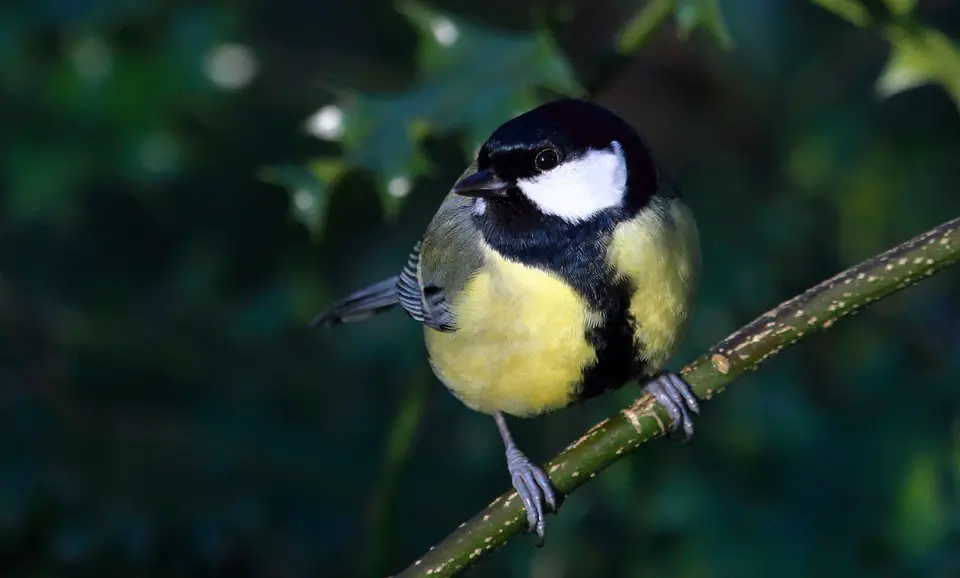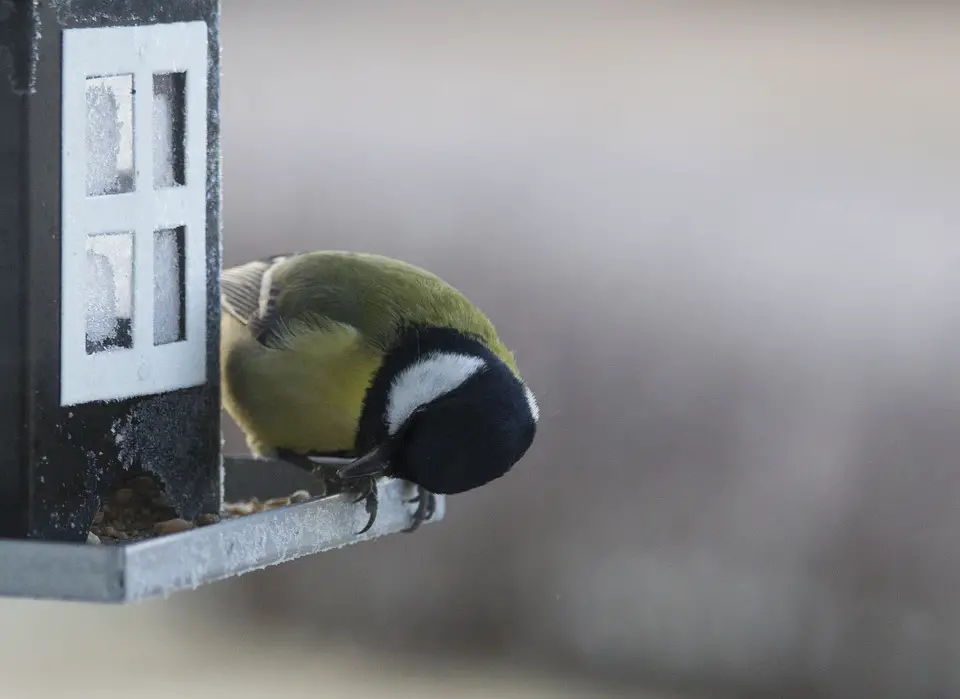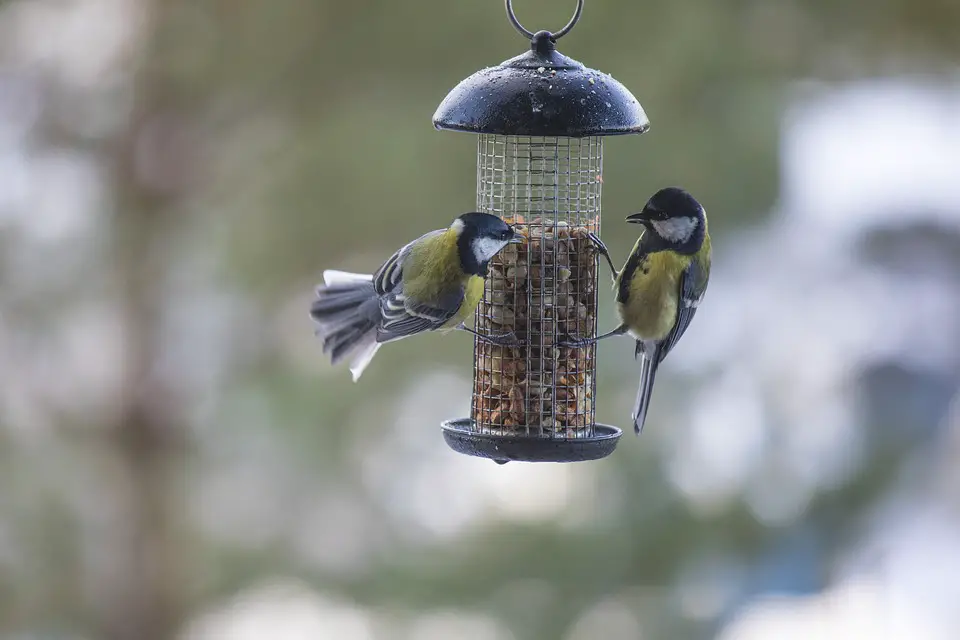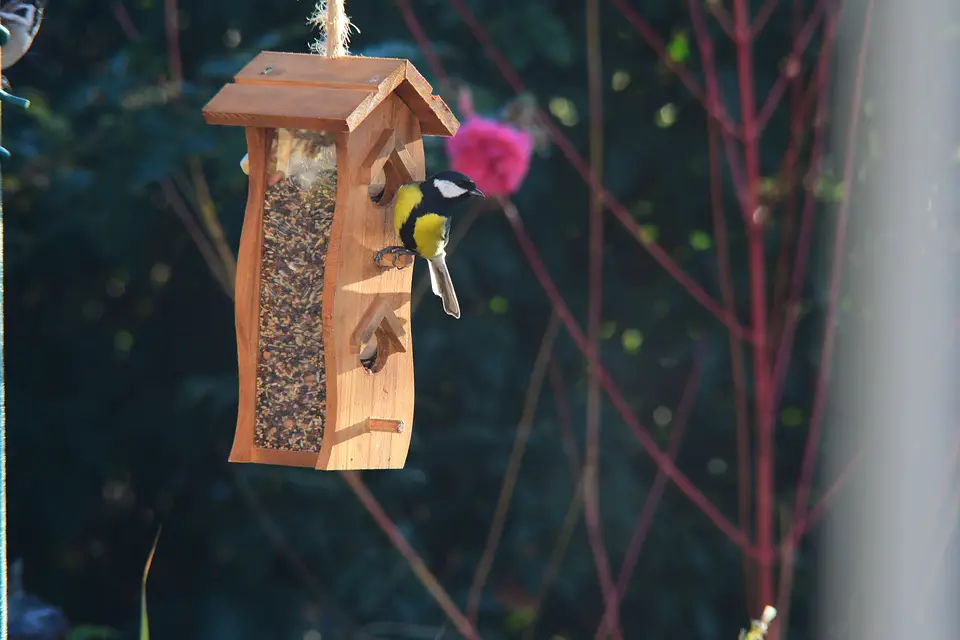Do you think you might have spotted great tits at your feeders? The cousin of the instantly recognisable blue tit is similarly marked at first glance but upon closer investigation, you will note that he has a distinctive black cap and his plumage is less blue, more green.
They were once predominantly woodland birds but are now very accustomed to garden life; being one of the larger birds in the tit family means, he can hold his own on a busy bird table.

If we understand his eating patterns in the wild maybe, supplementing his diet at our feeding tables should be simple, shouldn’t it?
Bill Oddie, that most famous of bird lovers, was asked what to feed great tits and replied “Anything”!
Now that might be true but I’m not so sure chilli con carne with a side of nachos is exactly what he had in mind!
What he alluded to is that the great tit is not a finicky eater in the wild or in your garden.
He is omnivorous meaning he enjoys both plant and animal life.
His main preference is insects, spiders and small earthworms and caterpillars on which to feed his young during breeding season.
In the garden, the great tit will eat mixed seed from feeders or from the ground. He will help the sparrows clean up any spilled seed that the larger birds have scattered from the table.
Peanuts, sunflower seeds and suet rank amongst his favourites too.

Table of Contents
In The Wild
The great tit’s diet is very much dependant on the season, during the spring breeding season he will feast on insects, always on the lookout for protein packed caterpillars on which to feed his young.
He removes the guts before feeding them to the nestlings.
The female lays an average of twelve eggs so it is a very busy time for both parents.
He will get his nourishment from insects, spiders, flies and moths.
He is a foliage gleaning bird, which means he will find much of his food from the underside of leaves. He is an acrobatic little fella and has no difficulty in hanging upside while he collects them!
The bark and crevices of the oak and birch trees are absolute havens for the grubs he desires.
He is a particularly intelligent bird; it has been known for him to use pine needles to extract larvae from holes in trees.
During autumn and winter, the great tit’s diet changes to seeds, nuts, berries and new buds.
Some plants use their berries as a very clever ploy to entice birds to distribute their seeds. A plant that produces berries surrounds its seed in juicy, fleshy pith. The great tit will get vitamins and energy as a reward for spreading the undigested seed.
Ivy berries are a particular favourite of his, as are those of the juniper bush. The berry has many calories as a Mars bar!
They love mistletoe berries but they are sticky and must frustrate the bird when they stick to their beaks.
During harsh winter periods, the great tit can eat up to 44% of his body weight in sunflower hearts and seeds!

In The Garden
The great tit is one of the larger members of the tit family and as such prefers to feed from the ground.
This doesn’t mean he won’t eat from your feeders and table, he will!
Sunflower seeds
He adores these, mostly because they have a very high fat content, which make them tasty and will fill him up quickly.
Just like his cousin the blue tit, he will use his perfectly honed short, slim beak to crack the seeds as he grasps them between his claws. Within seconds, he gets to the treasure, the sunflower heart inside.
He won’t mind if you hang sunflower hearts, he will devour those too.
Peanuts
Whole peanuts are the great tit’s preference, though I offer chopped nuts during the early spring breeding season, purely as whole nuts present a choking hazard to nestlings.
Peanuts are high in fat and offer an excellent source of energy, which the great tit can store until its needed, perfect for cold winters.
Suet pellets
Either hung from a branch or on a bird table the great tit will eat from either.
Suet also has a high fat content and so is a particularly useful substitute for the insects that the great tit would usually feed on, but are not plentiful, during a cold winter.

The gardener’s friend
The great tit roosts amongst ivy and well-established evergreens, from this vantage point he can see aphids and pests on rose bushes and vegetable patches.
He will effortlessly swoop in and hoover them up, much to the gratitude of the gardener.
Int’ milk brilliant!
Do you remember the gold top milk delivered to your door with the lid pecked away and the inch of cream gone from the top?
Great tits were the original culprits!
Now that we buy our milk in plastic bottles, it seems even more obvious that we should help supplement their nourishment.
The great tit is a gregarious character, confident and strongminded, if you put feed out on your garden table specifically for him, you can be sure he will nudge all other birds out of the way and get it!
He’s my kinda bird!

Enjoyed this post but for one thing, the continued reference to the bird in the masculine form. They come in both sexes.